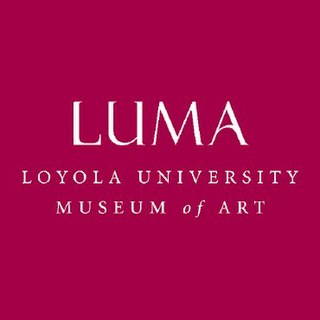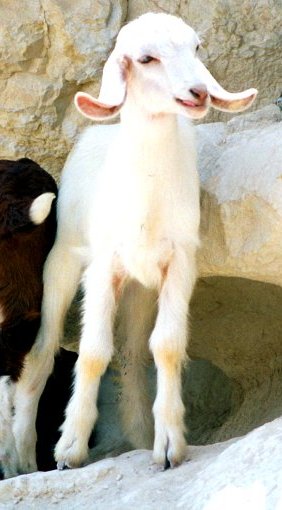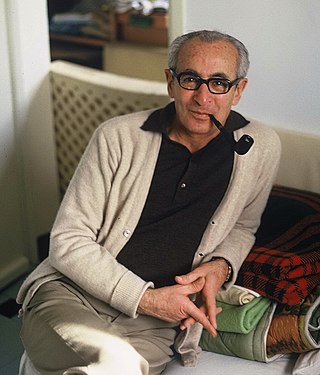Sources
- Gems in Israel: Archie Granot, Master Paper Cutter
- Archie Granot Papercuts - Cutting Edge Ketubas and Jewish Art
Archie Granot is a papercutting artist based in Israel. He works in traditional Jewish art, including ketubahs (ketubot), mizrachs, mezuzahs, haggadah and blessings for the Jewish life cycle, etc. Archie was born in London, England in 1946 and moved to Israel in 1967.
Granot uses a scalpel to produce his papercut works, rather than the scissors which are more common with other artists. Granot's use of Hebrew inscriptions, handcut in calligraphic letters in his Jewish papercuts, is an integral part of his work. Many of the texts relate to Jerusalem, Judaism and Israel as he draws inspiration of the Holy City.
Recent works include his Papercut Haggadah [1] on which he worked for nearly a decade. The Haggadah consists of 55 individual works in which all elements, text as well as design, have been cut by scalpel.

The Haggadah is a Jewish text that sets forth the order of the Passover Seder. According to Jewish practice, reading the Haggadah at the Seder table is a fulfillment of the mitzvah to each Jew to tell their children the story from the Book of Exodus about God bringing the Israelites out of slavery in Egypt, with a strong hand and an outstretched arm.

The Loyola University Museum of Art (LUMA), which opened in the fall of 2005, is unique among Chicago's many museums for mounting exhibits that explore the spiritual in art from all cultures, faiths, and eras. LUMA is located on Loyola University Chicago's Water Tower Campus in downtown Chicago, at 820 North Michigan Ave.

Arthur Szyk ; June 3, 1894 – September 13, 1951) was a Polish-born Jewish artist who worked primarily as a book illustrator and political artist throughout his career. Arthur Szyk was born into a prosperous middle-class Jewish family in Łódź, in the part of Poland under Russian rule in the 19th century. An acculturated Polish Jew, Szyk always proudly regarded himself both as a Pole and a Jew. From 1921, he lived and created his works mainly in France and Poland; in 1937 he moved to the United Kingdom. In 1940, he settled permanently in the United States, and was granted American citizenship in 1948.
Archie Rand is an American artist from Brooklyn, New York, United States.

Papercutting or paper cutting is the art of paper designs. Art has evolved all over the world to adapt to different cultural styles. One traditional distinction most styles share is that the designs are cut from a single sheet of paper as opposed to multiple adjoining sheets as in collage.

Chad GadyaorHad Gadya is a playful cumulative song in Aramaic and Hebrew. It is sung at the end of the Passover Seder, the Jewish ritual feast that marks the beginning of the Jewish holiday of Passover. The melody may have its roots in Medieval German folk music. It first appeared in a Haggadah printed in Prague in 1590, which makes it the most recent inclusion in the traditional Passover seder liturgy.

Mark Podwal is an artist, author, filmmaker and physician. He may have been best known initially for his drawings on The New York Times Op-Ed page. In addition, he is the author and illustrator of numerous books. Most of these works — Podwal's own as well as those he has illustrated for others— typically focus on Jewish legend, history and tradition. His art is represented in the collections of the Metropolitan Museum of Art, the Victoria and Albert Museum, the Israel Museum, the National Gallery of Prague, the Jewish Museums in Berlin, Vienna, Stockholm, Prague, New York, among many other venues.

Jewish ceremonial art is objects used by Jews for ritual purposes. Because enhancing a mitzvah by performing it with an especially beautiful object is considered a praiseworthy way of honoring God's commandments, Judaism has a long tradition of commissioning ritual objects from craftsmen and artists.

Heinz Seelig was a German-born, Israeli interior architect known for his pioneering work in interior design, and later for his Biblically inspired paintings as well as the Seelig Art Haggadah.

The Washington Haggadah is a Hebrew-language illuminated manuscript haggadah created by Joel ben Simeon in 1478. He was a specialist illuminator of haggadot, who seems to have worked in both Italy and Germany, and whose style shows influences from the contemporary art of both countries. It is significant as it shows the vibrancy of Jewish art during the medieval period, scenes of daily life, and also highlights positive interfaith relations so often forgotten throughout this time.

Arie Aroch was an Israeli painter and diplomat born in Kharkiv, now Ukraine and then part of the Russian Empire. Aroch's work was a mixture of Pop Art and abstract art, along with elements from his biography. In addition, many scholars of Israeli art history have pointed out Aroch's pioneering use of Jewish themes in his works. His painting style included unstructured scribbling and drawing, and it influenced a broad range of artists, including Raffi Lavie, Aviva Uri, etc. Sarah Breitberg Semel, in her article, Agrippa versus Nimrod (1988), suggested Aroch as a model for the new Israeli concept of design in art, and suggested his painting, Agrippas Street was the representative of Jewish identity. In 1971, Aroch was awarded the Israel Prize in Painting for his work.

Visual arts in Israel or Israeli art refers to visual art or plastic art created by Israeli artists or Jewish painters in the Yishuv. Visual art in Israel encompasses a wide spectrum of techniques, styles and themes reflecting a dialogue with Jewish art throughout the ages and attempts to formulate a national identity.

Jewish paper cutting is a traditional form of Jewish folk art made by cutting figures and sentences in paper or parchment. It is connected with various customs and ceremonies, and associated with holidays and family life. Paper cuts often decorated ketubbot, Mizrahs, and ornaments for festive occasions. Paper cutting was practiced by Jewish communities in both Eastern Europe and North Africa and the Middle East for centuries and has seen a revival in modern times in Israel and elsewhere.
Zvi Raphaeli was an Israeli impressionist painter. A rabbi by profession, he merged religion and art deftly in his paintings. He was educated in France from the age of three, and studied art at the École nationale supérieure des Beaux-Arts in Paris, and also at the Bezalel Academy of Art and Design in Jerusalem. He initially studied engineering but after losing many close relatives including his father and brother in World War II, Raphaeli decided to study to be an artist. He was a member of the French Resistance during World War II, and lived in Israel where he moved to, in 1945 at the age of 21. Later on in his life, he also lived in the United States.

Maty Grunberg born 1943, is an Israeli sculptor and known also for his Artist Books.

The Birds' Head Haggadah is the oldest surviving illuminated Ashkenazi Passover Haggadah. The manuscript, produced in the Upper Rhine region of Southern Germany in the early 14th century, contains the full Hebrew text of the Haggadah, a ritual text recounting the story of Passover – the liberation of the Israelites from slavery in ancient Egypt – which is recited by participants at a Passover Seder. The text is executed in block calligraphy and accompanied by colorful illustrations of Jews performing the Seder practices and reenacting Jewish historical events.

Irvin Ungar is an American former pulpit rabbi and antiquarian bookseller, considered the foremost expert on the artist Arthur Szyk. Ungar is credited as “the man behind the Szyk renaissance” who pulled Szyk “out of obscurity” through scholarship, exhibitions, and publications spanning nearly three decades.

The Golden Haggadah is an illuminated Hebrew manuscript originating around c. 1320–1330 in Catalonia. It is an example of an Illustrated Haggadah, a religious text for Jewish Passover. It contains many lavish illustrations in the High Gothic style with Italianate influence, and is perhaps one of the most distinguished illustrated manuscripts created in Spain. The Golden Haggadah is now in the British Library and can be fully viewed as part of their Digitized Manuscript Collection MS 27210.

Franzisca Baruch was a German–Israeli graphic designer. She is known for designing Hebrew fonts, the cover of the first Israeli passport, the emblem of Jerusalem, and the logo of the Ha'aretz newspaper.
David Einstein is an American artist based in Palm Springs, California.